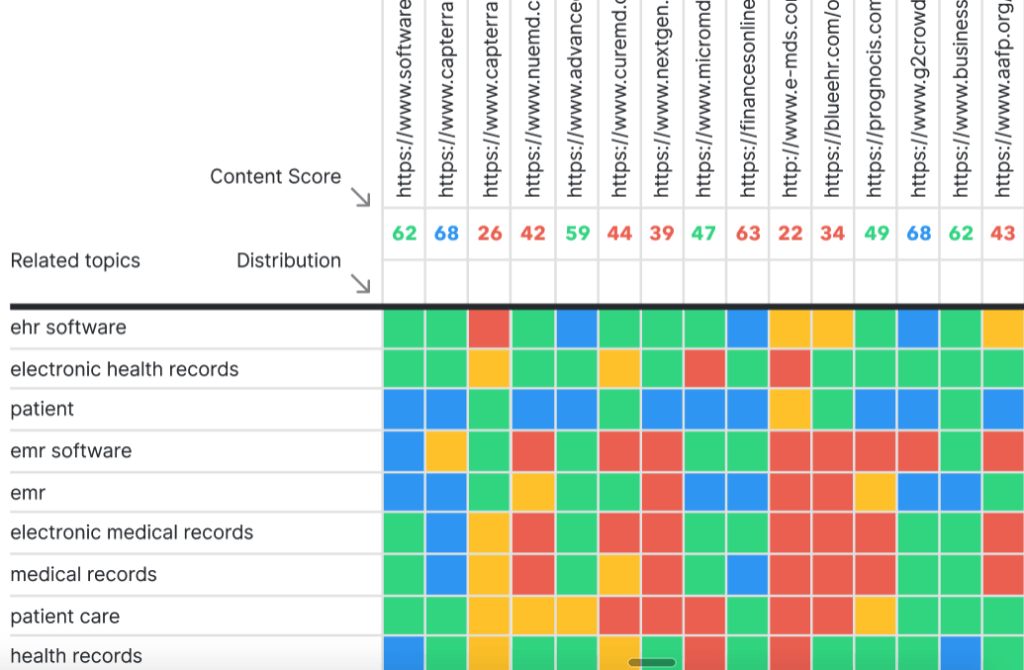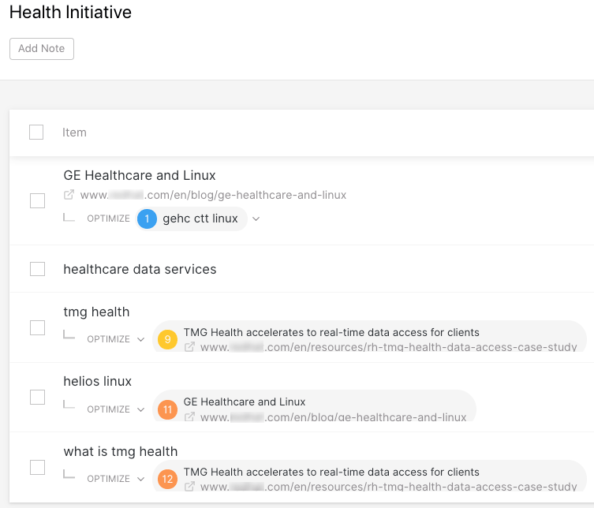A Solid Content Strategy is The First Step to Building Website Authority
A lot of SEO tools use the concept of Domain Authority (DA) as a way to predict how well your site will rank on popular search engines like Google and Bing. But since the release of Google’s Hummingbird update in 2013, when the search engine began taking the whole meaning of a search term into account rather than a few words, quality content that matches user intent has become increasingly important in domain authority and ranking.
This post examines domain authority from a search engine optimization perspective and why the emphasis on that one metric doesn’t work. Then we look at the importance content in building authority, the premise being that it’s the content that builds authority, not the links.
The Role of Domain Authority
Some believe that domain authority creates a sort of pecking order on SERPs. The more authority you have, the higher up you should rank on Google, Bing and other search engines.
From an SEO perspective, domain authority is determined by the number of trustworthy backlinks you have to your site. The more links, the better your domain authority.
But as we’ll discover later on, Google has a different way of looking at authority. Gone are the days where the search engine matched keyword on a page to a search term. Google has added new layer to its knowledge graph. Called the topic layer, it’s “engineered to deeply understand a topic space.”
One can surmise that Google can now understand the content of both a page and site as a whole. Therefore, authority is less about exhibiting the right backlink profile and more about offering the best content.
What Is an Authoritative Website?
An authoritative website, in the eyes of an SEO tool, is one that has a lot of external backlinks, the logic being if a lot of people are linking to you, you must be a trustworthy site. There are several SEO tools out there that can help you figure out your own DA rating. We’ll explore some of them below.
But when you take a look at how Google is assessing sites for ranking result, you’ll see why it’s important to make sure your content truly is high-quality. Of course, that will mean more people will link to you, but it also means more users will find you, as well.
Moz
Moz is the original creator of domain authority (DA). Recently they revised how they calculate their score, creating some chaos in the search engine. Just to be clear, Google doesn’t use Moz’s Domain Authority as a ranking factor.
Let that sink in for a moment.
Read this post by Barry Schwartz for some historical background on how the hype surrounding DA occurred. Although the article, focuses primarily on Moz, the same can be said for SEMRush and aHref’s versions of DA.
Basically, the fixation on DA as one of the main ranking factors is an extension of the SEO industry’s obsession with Google PageRank. When Google stopped publishing PageRank, Moz stepped in to fill the void with their model.
But, since Google doesn’t use DA, any attempts to increase domain authority have no impact on rankings. A high domain authority website won’t improve your standing.
Stop optimizing for Domain Authority; it has no impact on Google rankings.
Barry Schwartz
Search Engine Land
SEMRush
Instead of one domain authority score, SEMRush uses four different scores: trust score, page score, domain score, and authority score.
The page score determines page authority based on the number of backlinks to a particular page. The domain score determines domain authority based on the number of backlinks to the entire domain.
The trust score is determined by the number of high-quality backlinks a site has. So you can have a high page or domain score, but a low trust score. It all depends on the quality and trustworthiness of the backlinks to your site.
The Authority score, according to SEMRush “is a compound metric used to gauge a domain’s overall quality and influence on SEO. The score is based on the domain’s domain score, trust score, quantity of backlinks, quantity of referring domains, quantity of referring IPs, correlation between domain score and trust score, follow vs. nofollow links, organic search traffic (from our Organic Positions report), and number of users (from our Traffic Analytics report).”
Ahrefs
Ahrefs has its own proprietary domain rating, and they released a new version of it last year. Not only do they count the number of backlinks to your site, but they take into account how many of them are dofollow instead of nofollow links. If a site is linking to you via a nofollow link, it won’t count toward your score.
They also look at the number of unique domains a site links to. If a site links to a whole bunch of unique domains, they lose some credibility with Ahrefs.
Once upon a time, Google also looked solely at backlinks to determine page ranking. Now it’s just one of many factors used to determine where a pang ranks in search engine results.
Google uses machine learning to determine page ranking and search results, updating their algorithms on almost a daily basis. The technology is called RankBrain and, according to Search Engine Land, it employs over 200 ranking signals to calculate domain authority.
To really find out what they’re looking for, you have to study their Search Quality Evaluator Guidelines and sort of read between the lines.
In the guidelines, Google talks a lot about high-quality content. A trusted website is one who’s content displays EAT (expertise, authoritativeness, and trustworthiness). They want to see statements of fact backed up by quality sources. They want to see in-depth blog posts that fully address a topic.
If you’re a medical or health website, they hold you to their YMYL (Your Money or Your Life) standard. If you’re giving medical advice or selling health products, your article better be backed up by hard, scientific facts if you want to rank in Google.
Finally, Google wants to see that you’re popular with its target audience. They want to see that visitors are staying on your site and reading your blog thoroughly. High time on site and pages per visit will increase your ranking, as will low bounce rates.
To do that, your content has to match the user intent of the keywords and topics you’re addressing. If someone is searching for advice on skincare products, are you writing thoughtful, medically backed content to help a user find the right skin care line, or are you merely promoting certain brands with no real evidence of their efficacy?
The more people trust you, the more Google will trust you, as well.
How a Robust Strategy Builds Expertise, Authority, and Trust
From the comparison above, you’ve probably gathered why you shouldn’t stop at backlinking when trying to boost your authority.
Link building, after all, is big business. However, just because a site has a whole bunch of links doesn’t necessarily mean it’s the kind of quality content Google is looking for.
Google being Google, they have the last word in how your site and its content rank. That’s why moving beyond pure SEO and thinking about your content strategy is so important to your ranking.
Let’s take a look at the steps of a good content strategy and how you can use them to improve your domain authority.
Determining Goals and Audience
The first step of any good strategy is to determine what your content marketing goals are and who your audience is. Once you have your goals framed and you know who you’re talking to, you can start to brainstorm the kinds of content that will get you ranked.
If your goal is to raise awareness of your products and your audience is millennial moms, you may want to create, for instance, some posts that offer parenting advice for different childhood stages.
For content like that, you’ll need experts and trustworthy sources to link to. Doctors, child psychologists, as well as sites like the CDC and the March of Dimes will give your content the trustworthiness and authority it needs to gain the trust of your audience and Google.
Content Audit
Next, you audit your current catalog. Where are the topic and keyword gaps in your content? Do you cover high-ranking keywords with weak content that doesn’t match user intent?
Here’s an opportunity to fill in those gaps and create new content that will match user intent. You can even create topic clusters that will explore topics in depth and signal value to your users.
Competitive Analysis
What do your competitors have? If you’re creating parenting content, maybe your competitors cover toddlers but not babies. Perhaps they have material that encompasses both age groups, but they don’t do it thoroughly.
Now is your chance to create the kinds of quality content Google is looking for.

Content Planning
Once you’ve done your gap and competitive analysis, you can plan your content around ranking keywords and topics. Make sure you’re covering every angle of a topic.

For instance, if you’re writing about feeding infants, make sure you cover breastfeeding and bottle feeding and get the opinions of experts.
Editing and Fact Checking
Your editing and fact-checking stage is critical to how Google ranks your content. Content that’s full of factual errors and spelling mistakes loses credibility with users. If users aren’t clicking on your content, Google isn’t ranking it.
And Google explicitly states in its Quality Ranking Evaluator Guidelines “high quality information pages should be factually accurate, clearly written, and comprehensive.”
Content Refreshes
When a piece of content starts to slip in SERP ranking, it’s probably become dated or somehow untrustworthy. It may be missing ranking topics or keywords. It could be that there is new research or data that trumps the facts in your piece.
It may just be an older piece from back in the day when only backlinking mattered.
Whatever the cause, refreshing old content is an opportunity to improve your authority and rank higher, merely by improving your already existing content.
Ranking in SERPs and domain authority now go way beyond link building. Creating quality content that attracts and retains users will signal to Google that you are a trustworthy, expert site that should rank high in their results pages.
Build a robust content strategy and build your domain authority.
What you should do now
When you’re ready… here are 3 ways we can help you publish better content, faster:
- Book time with MarketMuse Schedule a live demo with one of our strategists to see how MarketMuse can help your team reach their content goals.
- If you’d like to learn how to create better content faster, visit our blog. It’s full of resources to help scale content.
- If you know another marketer who’d enjoy reading this page, share it with them via email, LinkedIn, Twitter, or Facebook.
Laurie is a freelance writer, editor, and content consultant and adjunct professor at Fisher College. Her work includes the development and execution of content strategies for B2B and B2C companies, including marketing and audience research, content calendar creation, hiring and managing writers and editors, and SEO optimization. You can connect with her on Twitter or LinkedIn.